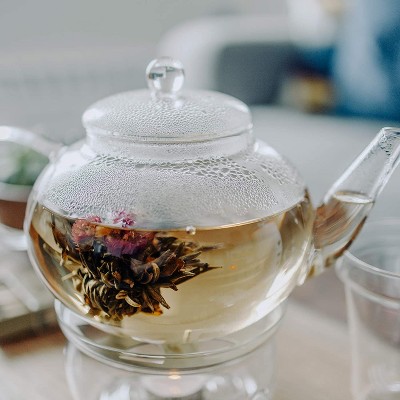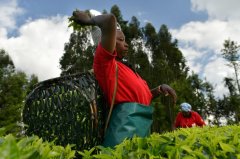Basic knowledge of six tea types and correct brewing methods what are the basic characteristics of tea?
All teas come from the same plant, Camellia.
However, there are many different varieties and varieties of plants. All the tea has withered. Wilting is the evaporation of water from leaves. Here is a simple explanation of production.
White tea is picked, withered and baked.
Green tea is picked and then steamed or fried to stop the process of oxidation and fermentation to neutralize active enzymes. After cooking, the leaves wither and then manipulate to achieve the desired leaf completion, and then steam or pan
The process of making yellow tea is similar to that of green tea, but after frying, there is a slow oxidation process. The buds and leaves are wrapped in paper or cloth, and then let them dry naturally for several hours. This process is called "yellowing" and is sometimes repeated for several days.

Oolong tea is discarded and withered after the basket. There is no cooking because the enzyme needs to remain active. The throwing of the basket scraped the edges & exposing the enzyme oxygen of the leaves and began to oxidize. Oxidation is the process of forming the flavor of oolong tea and black tea. After partial oxidation occurs, between 15% and 75%, the leaves are boiled.
Black tea is crushed and withered; it is not steamed because the enzyme needs to remain active. Rolling cracks the surface of the leaves, exposing the enzymes in the leaves to oxygen and starting to oxidize. Oxidation is the process of forming the flavor of oolong tea and black tea. After complete oxidation occurs, the leaves are completed with forced hot air.
Pu'er (black tea) is made from big leaves of large-leaf varieties. Pu'er tea is either green (raw) or black (ripe) (oxidized). Black (cooked) tea is fully oxidized, fired, and then usually aged in specially designed caves or climate-controlled rooms, during or after which "compost" is carried out by introducing water into tea stacks that are often turned and cared for. promote the growth of beneficial bacteria. Green Pu'er is slightly oxidized before firing, and then completely oxidized with the passage of time.
TISANES is not TEA (Camellia sinensis). Tisanes contains no tea (camellia). Tisanes contains herbs, spices or fruits to create their flavor. Most Tisanes is non-caffeinated, that is, non-caffeinated-naturally!
Important Notice :
前街咖啡 FrontStreet Coffee has moved to new addredd:
FrontStreet Coffee Address: 315,Donghua East Road,GuangZhou
Tel:020 38364473
- Prev

The Origin and Development of the three Black Tea in China the Origin, Development and Historical Story of Black Tea
Tea is the second largest drink in the world after water. Historically, the discovery of tea has been shrouded in myths and uncertainty. The attraction of tea today comes largely from exoticism. It is believed that the Chinese emperor Shennong (2737 BC) was the first person to discover tea. While drinking boiling water in the garden, Shennong caught a leaf of a nearby tea tree with a cup.
- Next

The Natural reasons for the good quality of Kenyan Tea main Distribution and Taste characteristics of Kenyan Tea
Kenya in East Africa is the world's third largest tea producer (fourth in the past few years) and the only country in Africa that produces large amounts of tea for the world market. Recently, it has also become a major source of innovation for new tea varieties and single-origin craft tea. Unlike India and Sri Lanka, where most tea is grown in large plantations, 90% of Kenya's tea is grown on an acre or less
Related
- Beginners will see the "Coffee pull flower" guide!
- What is the difference between ice blog purified milk and ordinary milk coffee?
- Why is the Philippines the largest producer of crops in Liberia?
- For coffee extraction, should the fine powder be retained?
- How does extracted espresso fill pressed powder? How much strength does it take to press the powder?
- How to make jasmine cold extract coffee? Is the jasmine + latte good?
- Will this little toy really make the coffee taste better? How does Lily Drip affect coffee extraction?
- Will the action of slapping the filter cup also affect coffee extraction?
- What's the difference between powder-to-water ratio and powder-to-liquid ratio?
- What is the Ethiopian local species? What does it have to do with Heirloom native species?

